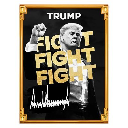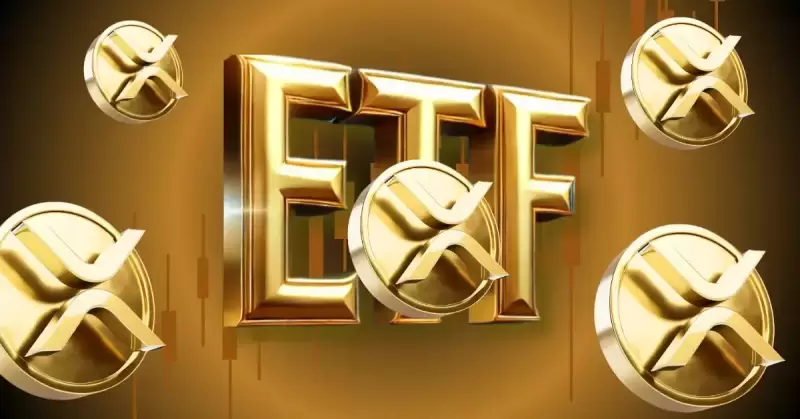 |
|
 |
|
 |
|
 |
|
 |
|
 |
|
 |
|
 |
|
 |
|
 |
|
 |
|
 |
|
 |
|
 |
|
 |
|
Y - 数日間の米国の関税が増加し、一時停止した後

The Biden administration has begun imposing a 10% tariff on goods imported from foreign countries into the U.S., beginning earlier in April.
バイデン政権は、4月の初めに外国から米国に輸入された商品に10%の関税を課し始めました。
This follows several days of U.S. tariff increases and pauses.
これは、米国の関税の増加と一時停止の数日間に続きます。
(Photo: © sinenkiy/Depositphotos)
(写真:©sinenkiy/dositphotos)
There are exceptions to this on some products and countries. Imports from China are taking the full force of increases with the possibility of a cumulative 145% from specific product and reciprocal tariffs.
一部の製品や国では、これには例外があります。中国からの輸入は、特定の製品や相互の関税から累積145%の可能性とともに、増加の全面的な力を奪っています。
The laundry industry’s response to the tariff increases has generally been to wait and see.
洗濯業界の関税の増加に対する反応は、一般的に待って見ることでした。
A few suppliers have enacted temporary surcharges to offset price increases. Since the supply-chain issues related to COVID, many laundry operators have increased stock of necessary goods and supplies to last for several months and are monitoring the situation to come up with appropriate strategies to keep goods and equipment on hand at the best prices.
いくつかのサプライヤーが、価格の上昇を相殺するために一時的な追加料金を制定しました。 Covidに関連する供給鎖の問題以来、多くの洗濯事業者は、数か月間持続するために必要な商品と消耗品の在庫を増やし、商品や機器を最高の価格で保管するための適切な戦略を考え出すために状況を監視しています。
The upheaval in U.S. tariffs on imports has been front and center since day one of the new administration.
輸入に関する米国の関税の大変なものは、新政権の1日目から最前線と中心になっています。
TRUMP’S AMERICA FIRST TRADE POLICY
トランプのアメリカの最初の貿易政策
On Jan. 20, President Donald Trump issued an executive order on an America First Trade Policy. The order called for many different studies (with an April 1 deadline) on national security and trade policy issues, and a review of the United States-Mexico-Canada Agreement (USMCA).
1月20日、ドナルドトランプ大統領は、アメリカの第一貿易政策に関する大統領命令を発行しました。この命令では、国家安全保障および貿易政策の問題に関する多くの異なる研究(4月1日の締め切り)と、米国とメキシコ・カナダ協定(USMCA)のレビューが求められました。
During an April 2 address, President Trump declared the day to be “Liberation Day,” unveiling a two-tier tariff structure. This involved a 10% tariff on imports from all countries (except Canada and Mexico) and “reciprocal” tariffs on specific countries engaged in what the administration termed “unfair trade practices.”
4月2日の演説で、トランプ大統領はこの日を「解放日」と宣言し、2層の関税構造を発表しました。これには、すべての国(カナダとメキシコを除く)からの輸入に対する10%の関税と、政権が「不公正な貿易慣行」と呼んだものに従事している特定の国に対する「相互」関税が含まれていました。
The 10% tariff went into effect on April 5, followed by the reciprocal tariffs on April 9.
10%の関税は4月5日に施行され、4月9日に相互の関税が続きました。
Since April 2, there has been a flurry of activity on the trade front to decipher and counter these new tariffs. Later in the day on April 9, after many countries sought to make deals, reciprocal tariffs were paused for 90 days, leaving the 10% tariff in place.
4月2日以来、これらの新しい関税を解読し、対抗するために、貿易戦線で活動が急増しています。 4月9日の後半、多くの国が取引をしようとした後、相互の関税が90日間一時停止され、10%の関税が整った。
The result? A lot of confusion and concern about the cost of imported goods and the effect it will have on future business.
結果?輸入品のコストと、将来のビジネスに与える影響に関する多くの混乱と懸念。
So, what’s going on with U.S. tariffs now, and what might happen later this year?
それで、私たちの関税は今何が起こっているのか、そして今年後半に何が起こるかもしれないでしょうか?
This article, presenting broad strokes about U.S. tariff policy since 2025 began, comes from two webinar updates.
この記事は、2025年が始まって以来、米国の関税方針に関する広範なストロークを提示し、2つのウェビナーの更新から来ています。
The National Association of Wholesaler-Distributors (NAW) presented its government update, “Navigating Tariffs: Strategic Insights for Wholesaler-Distributors,” on April 8.
全米卸売業者協会(NAW)は、4月8日に政府の最新情報「ナビゲート関税:卸売業者のための戦略的洞察」を提示しました。
The main presenters were Alex Hendrie, NAW’s vice president of government affairs, and Eddy Hayes, a principal partner at Leake Andersson in New Orleans. He leads the firm’s international trade and customs practice.
主なプレゼンターは、NAWの政府問題担当副社長であるAlex Hendrieと、ニューオーリンズのLeake Anderssonの主要なパートナーであるEddy Hayesでした。彼は会社の国際貿易と税関の慣行を率いています。
Then on April 16, the National Federation of Independent Business (NFIB) presented “Tariffs 101 and the Latest Updates,” led by Holly Wade, executive director of the NFIB Research Center.
その後、4月16日に、National Federation of Independent Business(NFIB)は、NFIB Research CenterのエグゼクティブディレクターであるHolly Wadeが率いる「関税101および最新のアップデート」を発表しました。
(Note: This article is for informational purposes only. For advice about tariffs regarding your specific business, contact your attorney or financial adviser of choice.)
(注:この記事は情報提供のみを目的としています。特定のビジネスに関する関税に関するアドバイスについては、選択した弁護士または財務顧問に連絡してください。)
PURPOSE OF NEW TARIFF POLICY
新しい関税方針の目的
“There are a lot of conflicting messages and confusion from Trump and his advisers about what the goal of ‘Liberation Day’ was,” says Hendrie. “Was it to impose tariffs on foreign countries who are taking advantage of us? Or is it doing that to then get better trade, trade deals and trade conditions.
「トランプと彼の顧問からの「解放日」の目標についての多くの矛盾するメッセージと混乱があります」とヘンドリーは言います。 「私たちを利用している外国に関税を課すことでしたか?
“A lot of the administration officials have noted anywhere from 50 to 70 countries have already approached the U.S. over a deal for lower tariffs. So, as much as there might be hesitancy about Trump’s approach, I think they would make the case that this is working.”
「多くの行政当局は、50〜70か国がすでにより低い関税をめぐる契約について米国にアプローチしていると指摘している。したがって、トランプのアプローチについてheするかもしれない限り、彼らはこれが機能していると主張するだろうと思う。」
Hayes says that, when looking at the U.S. tariff structure, the foundation of the trade system for the past 80 years is a bedrock principle known as the most favored nation rate. That’s been in place since the general agreement on tariffs and trade in 1947. The MFN rate is the highest tariff that a country can charge for a particular good.
ヘイズは、米国の関税構造を見ると、過去80年間の貿易システムの基礎は、最も好まれている国家料金として知られる岩盤原則であると言います。これは、1947年の関税と貿易に関する一般的な合意以来、MFNレートは、国が特定の利益に対して請求できる最高の関税です。
“For example, if I’m a U.S. business and I’m importing bicycles from Belgium, if the government agrees to an MFN rate of 10% for those imported bicycles, then that’s the rate I have to charge to bicycles from Panama, from China, from every country that’s in the WTO (World Trade Organization) system,” he says.
「たとえば、私が米国のビジネスであり、ベルギーから自転車を輸入している場合、政府が輸入自転車のMFNレートに10%のMFNレートに同意している場合、それはパナマ、中国、WTO(世界貿易機関)システムのすべての国から自転車に請求しなければならないレートです」と彼は言います。
“The goal of an MFN rate is to provide security and predictability and non-discrimination in trade. So, whatever the best deal that I give, whatever the lowest rate is, I have to apply that to the same ‘like’ product from every WTO member.
「MFNレートの目標は、貿易におけるセキュリティと予測可能性と非差別化を提供することです。したがって、私が与える最良の取引が何であれ、最低レートが何であれ、私はそれをすべてのWTOメンバーの同じ「同様」製品に適用する必要があります。
“That’s been
「それはそうです
免責事項:info@kdj.com
提供される情報は取引に関するアドバイスではありません。 kdj.com は、この記事で提供される情報に基づいて行われた投資に対して一切の責任を負いません。暗号通貨は変動性が高いため、十分な調査を行った上で慎重に投資することを強くお勧めします。
このウェブサイトで使用されているコンテンツが著作権を侵害していると思われる場合は、直ちに当社 (info@kdj.com) までご連絡ください。速やかに削除させていただきます。



















![クッパーズ城:Yrax 100%(1コイン)(モバイル)ジオメトリダッシュ[2.2] クッパーズ城:Yrax 100%(1コイン)(モバイル)ジオメトリダッシュ[2.2]](/uploads/2025/04/30/cryptocurrencies-news/videos/bowsers-castle-yrax-coin-mobile-geometry-dash/image-1.webp)







































